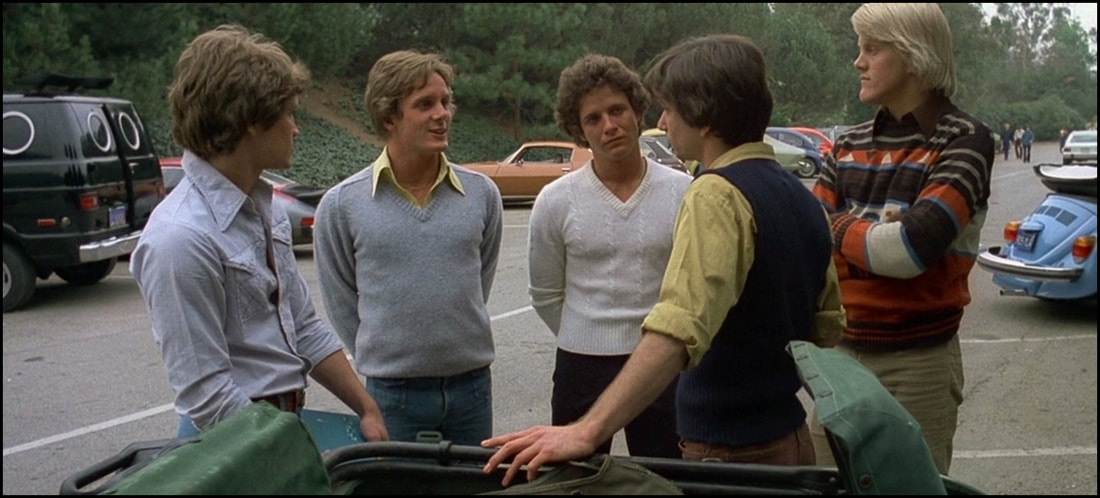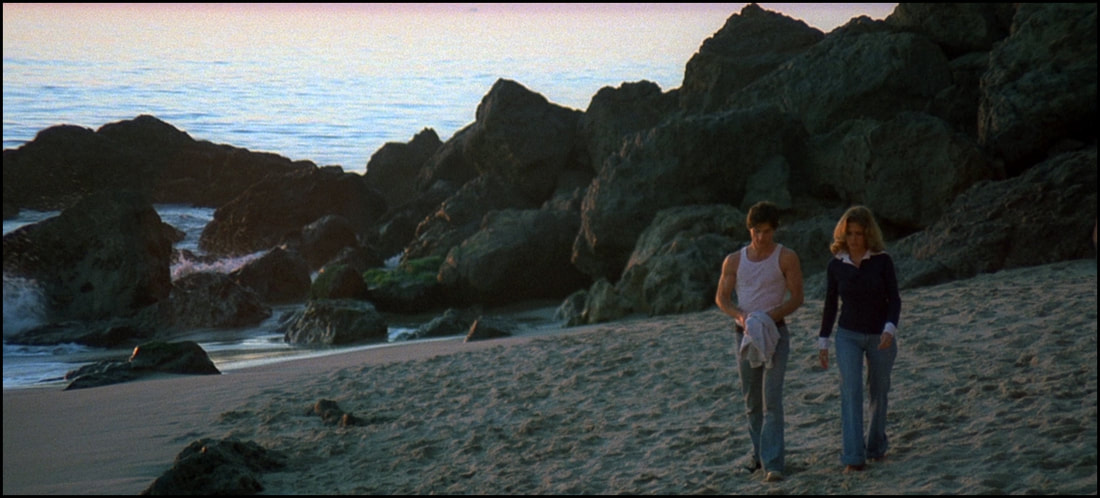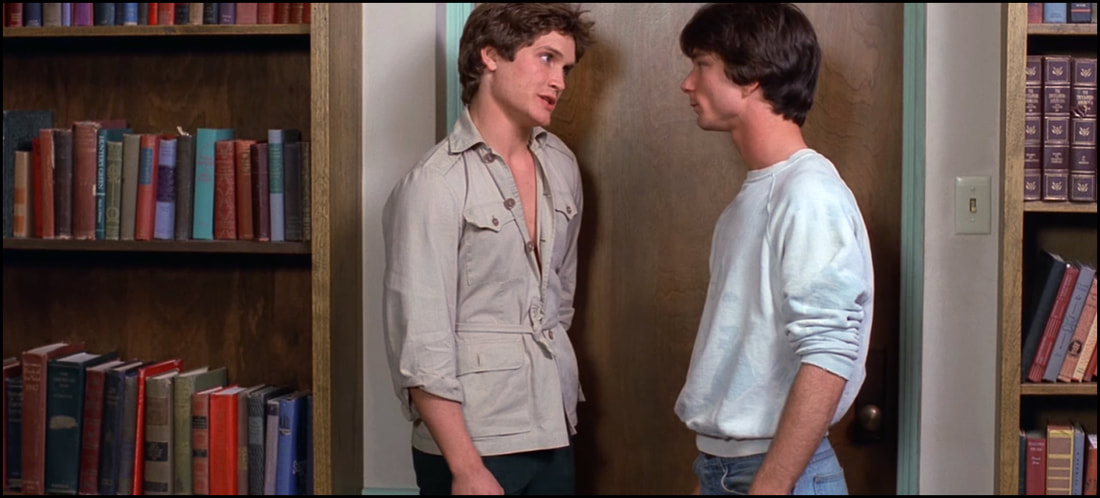Certainly, there are some pictures whose graphic sensibilities alone might cause a film to require a bit more time to be appreciated, thus going on to celebrity as it ages gracefully. Also, there are subjects that resonate both in their time as well as find lives of their own with subsequent generations of moviegoers. Of course, there are even talents – both at the beginning and ends of their respective careers – whose contributions to memorable characters or quotable scenes that tend to take on new meanings with folks who might find them years if not a decade or two later. All of these factors could very well play into one picture being elevated to cult status … or honestly? It could be none of the above.
That’s why I’ve always encountered my own challenge in explaining precisely why I think it is a particular motion picture may’ve gone on to a great afterlife; and such is the case with 1976’s Massacre At Central High. At best, it’s a curious oddity – not necessarily topical for its day, though some might suggest its exploration of violence in school is better suited for today. As a film, it isn’t all that good nor all the bad. It certainly doesn’t boast any impressive or subversive performances, nor any cavalry of oddball characters. But maybe – just maybe – it’s the respectable workmanship coupled with the fact that something like this could happen Anywhere, USA that compels those who seek out both forgotten and bygones products to sample its wares.
Like it or not, we’ve got a cult film on our hands! So let’s consider school is in session!
(NOTE: The following review will contain minor spoilers necessary solely for the discussion of plot and/or characters. If you’re the type of reader who prefers a review entirely spoiler-free, then I’d encourage you to skip down to the last few paragraphs for my final assessment. If, however, you’re accepting of a few modest hints at ‘things to come,’ then read on …)
“When new student David arrives at Central High, he discovers that it is lorded over by a gang of bullies who rule the school through intimidation and violence. David’s friend Mark encourages him to join this dominant clique, but instead David stands up for their victims, and the gang cripples him in retaliation. Soon David begins taking steps to end their reign of terror permanently, setting in motion an explosive cycle of killing that may not end until no one is left to graduate!”
Writer/director Rene Daalder didn’t have much of a film pedigree when he was tasked by producer Harold Sobel to bring the silver screen nightmare to life. Essentially, the superficial ideas at the heart of Massacre’s premise suggests that Sobel thought he was getting in the exploitation business: this cast of young and good-looking prospects would be put through their paces, and the script suggested that one-by-one they’d suffer some grisly endings once the school’s social structure went to hell in a handbasket … but therein lies the rub, as they say. As conceived by Daalder, Massacre was clearly about more than just some customary bloodletting; and anyone involved should’ve seen from a mile away that this was going to explore more than just one lunatic’s growing bloodlust.
Indeed, Daalder’s script strongly suggests that this particular high school world lives in a vacuum. Absolutely no time of any consequence is spent with any adult; while there may be a few seen here and there, those characters are little more than screen filler to give an air of authenticity to the captured proceedings. What story there is remains an almost clinical exercise in securing authority: who has it, how can it be lost, and what happens in that vacuum when no one appears to be in charge. Suffice it to say, this is a far cry from the usual teen-set high school melodramas – murders or not – and the director strived for something more to say about these journeys from adolescence to maturity.
David (as played by Derrel Maury) is a closet sociopath. While we’re given no origin story for where his tendencies toward violence originated, it’s pretty clear that he’s been feeling his oats for quite some time now. (There is a strong hint that he’s done this kind of thing before, as his pal Mark attests that he’s “helped him out” in the past.) With each successive murder, we’re shown that he’s grown almost emotionless about his actions – in his eyes, they’re just a means to an end, and there’s nothing personal about it – but somehow he’s managed to keep it all together by running.
While it’s not perfectly clear, I suspect these public displays of arrogance is what serves as the catalyst for David to become this secret ‘White Knight’ to the student body. One by one, he carefully extracts a measure of lethal justice on these bullies; and, one by one, they go down, each a bit more painfully than the last. Before you know it, Central High is free of oppression … but this is where Daalder’s script truly hits its stride.
In the absence of any totalitarianism, the oppressed now rise up and become the oppressors. Each of these victims suddenly finds himself or herself wanting a piece of that power, and they’re willing to team-up and collaborate against their former friends in order to fill that hole in the pecking order created with David’s handiwork. The former wallflowers, the pot crowd, the chubby loser, and the volunteer student librarian are all suddenly at odds with one another – instead of aligned against a common enemy – and, as one might guess, David’s none too happy with their newfound expression. In fact, he’s about to turn the tables on them yet again, this time with an eye for eliminating anyone and everyone who gets in his way.
Unlike other films set in school, Massacre is unforgiving in its portrayal of the potential recklessness of these American youth. Daalder creates a microcosm within our society, structures it with its own rules of conduct, and then shows the possible consequences of allowing a harmful status quo to propagate in ways unimagined. It’s sometimes dark and sometimes chilling, but it never shirks away from the formula as prescribed. Whether or not it’s an entirely accurate picture is unimportant as it’s these ideas that propel the narrative from the start to its closing scene. On that front, it stays true to the school.
As to why the film has grown legs of its own?
As I suggested above, that’s a hard egg to crack.
While some might read my review and feel that Massacre revels in its own excesses, I don’t think that’s the case here. The violence – while prevalent after the story’s set-up – never rises to the level of gratuitousness as is all-too-common in most exploitation features, especially ones featuring teens. Sure, there’s a smattering of blood here and there – and there’s more than a single pair of breasts – but it’s all rendered with what I’d call an almost tasteful restraint. Furthermore, there’s really no singular performance that stands out amongst the cast. Though there are a few recognizable faces in there, they certainly don’t call attention to themselves. Robert Carradine is so exceptional here as the ‘loner with a possible art fetish’ that it’s hard to believe he'd steal the show in Revenge Of The Nerds just a few years later; and Andrew Stevens makes for a great-looking bad boy in typical teenage fashion.
Still, I’m inclined to think that those who’ve both found and praised/promoted the picture have seen the value in its subversive message about high school culture.
Is it too much to suggest that maybe it drives you so mad you just wanna kill someone?
That’s precisely how massacres are started.
Massacre At Central High (1976) was produced by Evan. DVD distribution (for this particular release) is being coordinated by the impressive Synapse Films. As for the technical specifications? Holy Moses! Bear in mind that – while I’m not trained video expert – I thought that this High-definition 1090p remaster looks and sounds absolutely incredible. Dare I say that independent films this old have never looked this good?! Very nicely done. As for the special features? Besides the new mastering, the disk boasts some audio interviews with the cast and crew; an all-new ‘making of’ documentary titled Hell In The Hallways; theatrical trailers as well as TV and radio spots; and the usual stills gallery. It’s a very good collection but I give my highest marks to the all-new documentary: the reflections are mostly fun, and their observations are definitely spirited, implying that a fun time was had to all.
Mildly Recommended.
At best, Massacre At Central High is at mid-1970’s oddity – a little film that could. Somehow this curious little destructive version of Peyton Place has defied the odds, found an audience, and achieved cult status. While some might suggest that it’s because the flick perfectly encapsulates the – snicker snicker – American high school experience (which is does not) – it’s success is likely owed to the fact that writer/director Daalder never lets any moss grow. He keeps chucking event after event after event – with an idea after idea after idea – at a pretty relentless pace, never taking a breath to acknowledge the growing pile of bodies in the plot’s wake. If he did – or if the audience did – little of this would make much narrative sense.
In the interests of fairness, I’m pleased to disclose that the fine folks at Synapse Films provided me with a complimentary Blu-ray of Massacre At Central High (1976) by request for the expressed purposes of completing this review; and their contribution to me in no way, shape, or form influenced my opinion of it.
-- EZ





 RSS Feed
RSS Feed